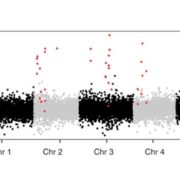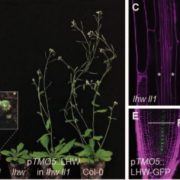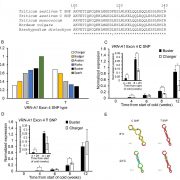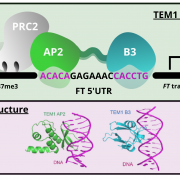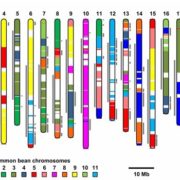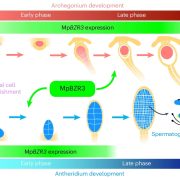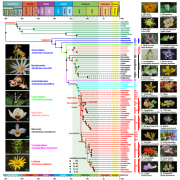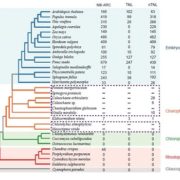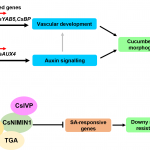Sex chromosome evolution in asparagus (Plant Cell)
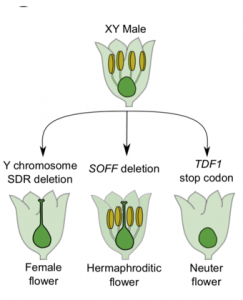 Separation of male and female flowers on different individuals, called dioecy, has evolved independently many times in flowering plants from hermaphroditic ancestors. A long-standing theory predicts that specialized X and Y sex chromosomes can evolve in dioecious species when mutations occur in two tightly linked genes with antagonistic effects on male and female development. In this paper, Harkess et al. provide functional evidence for this two-gene model of sex chromosome evolution in garden asparagus (Asparagus officinalis). In asparagus, the X and Y chromosomes are cytologically homomorphic, but the Y chromosome contains a ~1 Mb, hemizygous sex-determining region. Previous work showed that this sex-determining region contains the gene SUPPRESSOR OF FEMALE FUNCTION (SOFF1) that dominantly blocks pistil development. Here, they extend this analysis by demonstrating the requirement for the closely linked DEFECTIVE IN TAPETAL DEVELOPMENT AND FUNCTION (TDF) in anther development. The combined activities of TOFF1 and TDF1 nicely explain how sex is genetically determined in the dioecious asparagus and gives new insights into plant sex chromosome evolution. (Summary by Frej Tulin) Plant Cell 10.1105/tpc.19.00859
Separation of male and female flowers on different individuals, called dioecy, has evolved independently many times in flowering plants from hermaphroditic ancestors. A long-standing theory predicts that specialized X and Y sex chromosomes can evolve in dioecious species when mutations occur in two tightly linked genes with antagonistic effects on male and female development. In this paper, Harkess et al. provide functional evidence for this two-gene model of sex chromosome evolution in garden asparagus (Asparagus officinalis). In asparagus, the X and Y chromosomes are cytologically homomorphic, but the Y chromosome contains a ~1 Mb, hemizygous sex-determining region. Previous work showed that this sex-determining region contains the gene SUPPRESSOR OF FEMALE FUNCTION (SOFF1) that dominantly blocks pistil development. Here, they extend this analysis by demonstrating the requirement for the closely linked DEFECTIVE IN TAPETAL DEVELOPMENT AND FUNCTION (TDF) in anther development. The combined activities of TOFF1 and TDF1 nicely explain how sex is genetically determined in the dioecious asparagus and gives new insights into plant sex chromosome evolution. (Summary by Frej Tulin) Plant Cell 10.1105/tpc.19.00859
[altmetric doi=”10.1105/tpc.19.00859″ details=”right” float=”right”]


